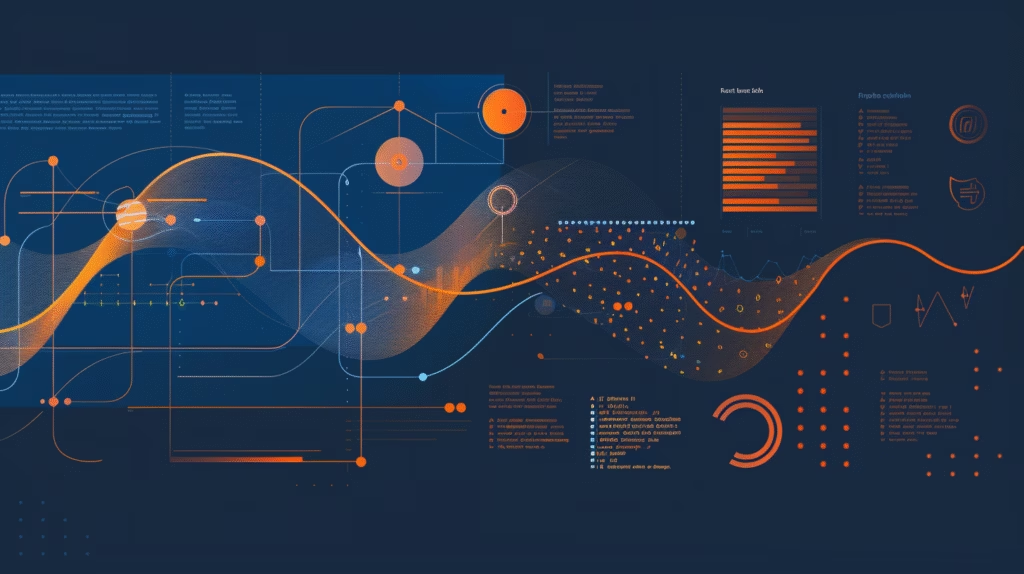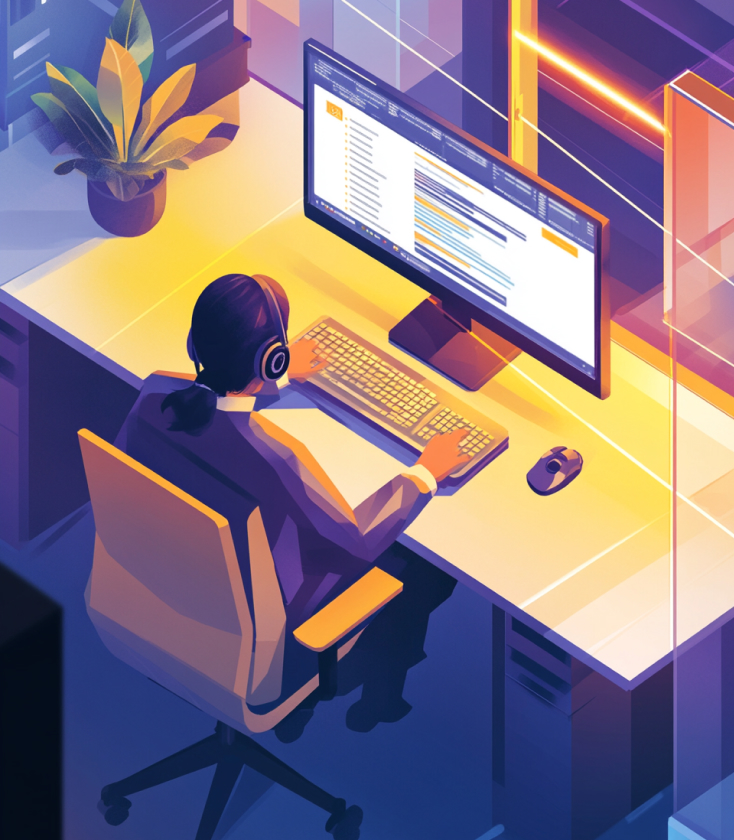Branded Calling: How to Stop Being “Scam Likely” and Start Being Answered
Phone calls from businesses are increasingly becoming the digital equivalent of that person at a party wearing too much cologne – everyone’s first instinct is to avoid them. With Americans receiving approximately four billion robocalls monthly (that’s about 1-2 calls every second), it’s hardly surprising that 77% of consumers refuse to answer calls from unknown numbers. For businesses relying on phone communication, this creates a rather awkward situation – like trying to sell umbrellas during a drought.
Businesses attempting outbound calling campaigns might as well be shouting into the void. Their perfectly legitimate calls get lumped together with scammers hawking extended car warranties or claiming the recipient has won a free cruise to nowhere. What’s a respectable business to do when everyone assumes they’re just another fraud artist with a autodialer? Branded calling is the answer.
Why Nobody’s Answering Your Calls (It’s Not Personal… Okay, Maybe It Is)
Remember when receiving a phone call was exciting? Neither do we. Those days vanished somewhere between the first “We’ve been trying to reach you about your car’s extended warranty” call and the 500th. The Federal Trade Commission now receives more complaints about unwanted calls than any other issue, and in 2023 alone, consumers lost a staggering $10 billion to phone-based fraud.
The situation has become so dire that the FCC actively advises consumers: “Don’t answer calls from unknown numbers. Let them go to voicemail.” Imagine being a legitimate business in this environment. You’re essentially walking around with an invisible “Probably a Scammer” sign taped to your back.
This mass avoidance behavior means your contact center’s efficiency metrics are probably looking as healthy as a fast food restaurant’s salad sales. Your agents are making calls that go straight to voicemail, your conversion rates are plummeting, and your customer satisfaction metrics are about as impressive as a participation trophy.
What Exactly is Branded Calling? (Hint: It’s Your Business’s Digital Nametag)
Branded calling, also known as branded caller ID, is the business communication equivalent of showing up to a blind date with proper identification and references. It allows organizations to display their company name, logo, and reason for calling directly on the recipient’s phone screen before they answer.
Think of it as Caller ID 2.0 – powered by verified data and carrier integration. Instead of seeing “Unknown Caller” or a random 10-digit number, your customer might see:
TechmodeGO
“Appointment Reminder – City Office”
✓ Verified Business Call
This technology combines three major systems working together behind the scenes:
- Caller Identity Verification (STIR/SHAKEN): Before a brand name can appear, the phone number must be authenticated using the STIR/SHAKEN framework. This ensures the number isn’t spoofed and truly belongs to the business making the call.
- Carrier & Aggregator Databases: Once verified, your business information is stored in approved carrier databases managed by major U.S. mobile carriers (AT&T, Verizon, T-Mobile) and authorized partners.
- Device Display Integration: When the call is delivered, the recipient’s phone checks that database. If everything matches up, the user sees your branded caller ID with logo, call reason, and verification badge.
All of this happens in milliseconds, creating a seamless experience that transforms a suspicious unknown call into a trusted business communication.
Call Attestation: The Trust Hierarchy Behind Your Calls
Not all calls are created equal in the eyes of the telecom gods. The STIR/SHAKEN framework (which stands for Secure Telephone Identity Revisited and Signature-based Handling of Asserted Information Using tokens – because apparently the telecom industry never met an acronym it didn’t like) includes a trust rating system called “attestation levels.”
These call attestation levels determine how much carriers trust that you are who you say you are:
- Level A (Full Attestation): The carrier knows exactly who you are and confirms you’re authorized to use this phone number. This is the telecom equivalent of a VIP pass – your calls sail through with minimal screening.
- Level B (Partial Attestation): The carrier knows you but isn’t entirely sure about your relationship with the number you’re using. It’s like showing up to a club where the bouncer recognizes your face but can’t remember if you’re on the guest list.
- Level C (Gateway Attestation): The carrier has very limited information about you or the number. This is basically arriving at an exclusive event wearing a t-shirt that says “Trust me, I know a guy who knows a guy.” Good luck with that.
For businesses, achieving that coveted A-level attestation is crucial. One Twilio healthcare customer saw answer rates increase by over 100% for calls with proper attestation and branding enabled. Without it, your calls might get the digital equivalent of the stink-eye – marked as “Scam Likely” or sent straight to voicemail purgatory.
In 2020, the FCC made STIR/SHAKEN implementation mandatory for voice service providers in the IP portions of their networks by June 30, 2021. This was later expanded to include additional providers with the goal of universal adoption. If your business makes outbound calls, especially at scale, proper attestation isn’t just nice to have – it’s essential for avoiding regulatory penalties and ensuring your calls actually reach humans.
The Benefits of Branded Calling (Beyond Not Being Mistaken for a Nigerian Prince)
Branded calling isn’t just about avoiding the spam folder of telephony – it delivers tangible business benefits that directly impact the bottom line.
First, the obvious: higher answer rates. Studies show answer rates increase by 20-40% when a verified brand name appears on the screen. In a world where nearly 80% of consumers won’t answer an unknown number, that’s the difference between actually connecting with customers and shouting into the void.
Branded Calling Builds Trust (When People Trust Phone Calls About as Much as Gas Station Sushi)
Trust is increasingly precious in a world where scammers change tactics faster than politicians change promises. Two-thirds of adults report being more willing to share information with organizations when incoming calls are branded with the company logo and name.
For industries handling sensitive information, this trust factor is invaluable:
- Healthcare providers making appointment reminders or discussing test results
- Financial institutions verifying suspicious transactions or account activities
- Government agencies delivering important notifications
- Service providers confirming installation appointments or technical support
Without branded calling, these organizations might as well be trying to convince someone to hand over their credit card details in a dark alley. With it, they create a transparent, professional communication channel that customers actually respond to.
Brand recognition also gets a significant boost. Logos contribute up to 80% of brand recognition, and branded calling incorporates these visual elements directly into the calling experience. Each call reinforces your visual identity, creating a more cohesive customer journey across all touchpoints.
Implementation: Getting Your Business Name in Lights (or at Least on Caller ID)
Setting up branded calling isn’t quite as simple as changing your Twitter handle, but it’s not quantum physics either. The process typically involves:
- Verification of number ownership: Proving you actually own and have the right to use your phone numbers
- STIR/SHAKEN implementation: Working with a provider that supports proper call attestation
- Brand profile creation: Submitting your business name, logo, and call reasons
- Carrier registration: Getting your information into the relevant carrier databases
The verification process helps ensure that only legitimate businesses can brand their calls, maintaining the integrity of the system. After all, if scammers could easily brand their calls too, we’d be right back where we started, just with fancier caller IDs.
How Techmode Handles Branded Calling (Spoiler: We’re Quite Good At It)
Techmode’s TechmodeGO platform powers branded calling through private AWS instances that give complete control over SIP signaling and identity management. Unlike multi-tenant cloud providers where call identity gets diluted among hundreds of unknown users, Techmode embeds STIR/SHAKEN attestation natively into the outbound call flow.
With an industry-leading NPS score of 85 (the industry average is a measly 36) and an A+ BBB rating, Techmode ensures calls receive proper attestation through direct carrier relationships and rigorous verification processes. Our U.S.-based support team helps clients navigate the complexities of call authentication, ensuring maximum deliverability and answer rates.
Five Burning Questions About Branded Calling
Q: Will branded calling work on all phones?
A: Branded calling display works on most modern smartphones across major carriers like AT&T, Verizon, and T-Mobile. Coverage continues to expand as carriers update their systems.
Q: How much does branded calling improve answer rates?
A: Most businesses see a 20-40% improvement in answer rates, with some healthcare organizations reporting increases over 100%.
Q: Can any business use branded calling?
A: Yes, but businesses must verify number ownership and comply with relevant regulations. Scammers need not apply.
Q: Does branded calling replace CNAM (traditional caller ID)?
A: Branded calling enhances CNAM rather than replacing it, adding visual elements and verification that traditional caller ID lacks.
Q: How long does it take to implement branded calling?
A: Implementation typically takes 2-4 weeks depending on verification requirements and existing phone system compatibility.
In a world where legitimate phone calls get treated with the same suspicion as a stranger offering candy from a windowless van, branded calling offers businesses a way to stand out, build trust, and actually reach customers. The choice is simple: adapt to the new reality of call verification or watch your outreach efforts continue to disappear into the void of ignored calls and full voicemail boxes.











